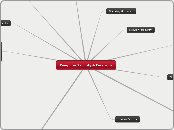realizată de Ken Reid 13 ani în urmă
374
YS

realizată de Ken Reid 13 ani în urmă
374

Mai multe ca acesta
Case Study: Israeli Modi'in Ezrahi private investigators -This group installed a trojan horse at businesses targeted by their clients. -Trojan allowed PI group to collect information on rival businesses. -Members of PI group ended up in jail or heavily fined.
Case Examples: Kevin Mitnick Jailed for numerous hacks and social engineering tricks. Insists his motivation was more curiosity than financial gain. Now works as a computer security consultant. Gary McKinnon Accused of hacking into dozens of US military and NASA computers in 2001 and 2002 and causing $700,000 worth of damage. Accepts that he hacked into many sites but not that he caused any real damage. Was looking for evidence of UFO's. Used fairly straightforward techniques to gain access, principally weak passwords. "I found out that the US military use Windows and having realized this, I assumed it would probably be an easy hack if they hadn't secured it properly." Jon Johansen / DVD Jon Implicated in the development of a hack that provided a work around to DVD encryption and content protection - DeCSS. Prosecuted but not found guilty by Norwegian court in 2003, claimed "the other guys did it." Still active in developing software hacks for Digital Rights Management (DRM), iTunes, iPhone etc.